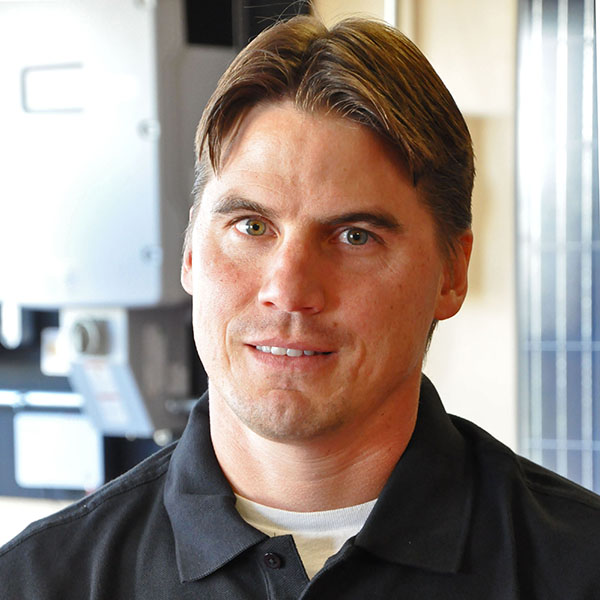“Mission, vision, and values statements aren’t worth much if they just sit on a shelf and collect dust. They are most useful when they are actually used to inform priorities and serve as guiding principles in developing a strategic and operational plan. We’ve tried to use them that way in developing this plan.”
Last month, NESEA Board Chair Phil Kaplan shared with you his excitement about our newly adopted Strategic Plan, and committed that we would include a feature in each Members Monthly relating to the rollout of the plan. We encourage you to provide feedback using this form. Please note, you must be logged in to access the form.
 This month, we’re talking to Fortunat Mueller of ReVision Energy. A member of the NESEA Board since 2015, Fortunat served on the Strategic Plan Steering Committee and drafted the first changes to the NESEA mission and vision in many years.
This month, we’re talking to Fortunat Mueller of ReVision Energy. A member of the NESEA Board since 2015, Fortunat served on the Strategic Plan Steering Committee and drafted the first changes to the NESEA mission and vision in many years.
JM: What is the new NESEA mission and how has it changed?
FM: NESEA advances the adoption of sustainable energy practices in the built environment by cultivating a community where practitioners share, collaborate and learn. NESEA has always had a mission statement that was clear about what we do. In updating the statement, we felt it was worth incorporating also who we are (practitioners/professionals), and how we do what we do (by collaborating, cultivating community, teaching and learning from each other).
JM: Why is the how significant?
FM: It’s significant because what NESEA has always done well is connecting practitioners to each other in a supportive and collaborative community. We do that in service of expanding their networks, helping them learn what they need to learn, and building their businesses. That focus on collaboration and community is something that is really unique and special about NESEA and we felt it was important to reflect it in our updated Mission statement.
JM: What is the new vision? How and why is this vision significant at this point in NESEA’s history?
FM: We envision a built environment in the Northeast that is climate neutral, adaptive, resilient, energy independent, architecturally inspiring, and supportive of connection and community.
The purpose of the vision statement is to describe our desired end state if we are successful in achieving our mission. I think the vision as it has now been articulated has always been shared implicitly by most in our community, but we found it useful to make it explicit. There are more and more organizations competing for all of our time and attention. Articulating where we hope NESEA will go in time is an important part of deepening the connection between and among NESEA members and making our organization strong.
It is interesting to me that in terms of its explicit focus on community, and the increased attention paid to advocacy, the strategic plan looks like it is responding to the events of the last several months. But as you know, the Strategic Plan is the result of a process that has been going on for about 18 months, so the timing with respect to external events is just kind of fortuitous. Now more than ever, strong communities and energy efficient, resilient buildings, and the value of collaboration are critical.
JM: What’s significant about the core values and operating principles that the Board embraced in the Strategic Plan?
FM: The core values and operating principles get the the heart of how we do what we do. They are really unique to NESEA. In particular, our focus on rigor with respect to data and our ethic of collaboration are important parts of what makes NESEA special to those in our community. I think most of us get that intuitively, but I believe there is value in naming and articulating our core values explicitly. When we do that, we embed those values into the DNA of the organization and that helps to ensure that they are consistent and durable even as individuals come and go and as, hopefully, the community grows and shifts as we continue to attract new, younger, more diverse membership.
Another one of the values that makes NESEA distinct from other organizations is the notion that involvement in our community doesn’t just help us build better buildings, it also helps our own businesses. This value has been reinforced more and more through NESEA’s programs - in particular, BuildingEnergy Bottom Lines, in which peer networks of NESEA members work together to optimize their Triple Bottom Lines.
JM: Any last thoughts about this new roadmap?
FM: Yes. Mission, vision, and values statements aren’t worth much if they just sit on a shelf and collect dust. They are most useful when they are actually used to inform priorities and serve as guiding principles in developing a strategic and operational plan. We’ve tried to use them that way in developing this plan. But it’s an ongoing process. We’ll need to refer back to them as we roll out new initiatives and consider changing the mix of what NESEA offers. A strategic plan is a 3-5 year document that will necessarily shift and evolve as it is developed, but the roadmap - mission, vision, values and operating principles - should be the most durable part of our thinking. They are the foundation upon which NESEA is built and will continue to grow and should be our anchor as we think about everything else.
Our Mission
NESEA advances sustainability practices in the built environment by cultivating a cross-disciplinary community where practitioners are encouraged to share, collaborate and learn.





Add comment